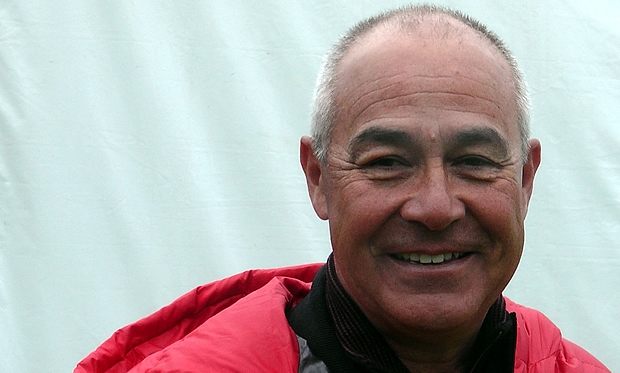
Dirk Kramers on the America's Cup
While having a heated inter-geek conversation at the Little America’s Cup last week about Oracle Team USA’s alleged automatic foil control system that the Kiwi press at the time were barking had ‘won cheating Oracle the Cup’, who should pop his head around the door at Restronguet Sailing Club other than Dirk Kramers, Design Executive for Larry Ellison’s defender.
Kramers, who’s son Max was doing sterling work at the International C-Class Catamaran Championship sailing on Steve Clark’s 1996 winner Cogito with Tornado veteran Lars Guck, beat a hasty retreat from the Club, but we nabbed him as he taking ‘research’ photography of the C-Class fleet the following day.
Having been part of the Alinghi design effort for a decade, Kramers was quickly snapped up by the Oracle campaign where he ended up heading the design team for this Cup. “It was a large group,” Kramers acknowledges. “We had a large design team of 26-27 guys with all the different disciplines - the aero, the hydro, the wing guys, structures and appendages – so trying to keep all that in check was a bit of a challenge.”
A sprightly 61-year old, whose tenure in the America’s Cup dates back to 1977 when he was mast designer for Ted Turner’s winning Courageous campaign, Kramer is looking in remarkably good shape for someone whose been working round the clock trying to get Oracle Team USA's design to coax their AC72 around the San Francisco race course faster than their opponent.
“Finally I get some time off. It has been pretty intense the last couple of weeks...the last couple of months in fact...” Kramers pauses. “The whole regatta has been surreal. You just charge and charge and charge and it never seems to end. You just have to keep your energy up to try and improve. I am still not really sure what really happened there!”
Kramers says that Oracle Team USA’s upwind speed deficit early on in the America's Cup matches against the Kiwis came as a surprise to the team. This struck us as odd given that all Emirates Team New Zealand’s telemetry data from the Louis Vuitton Cup had been made publich and the defender has its sophisticated spycams the footage from which they can analyse as well.
“The problem with the multihulls is that you have the data, but you still need to know the wind speed and measuring wind is a very difficult thing,” counters Kramers. “Since the boat speed of multihulls is a multiple of the wind speed, if you are off by one knots of your wind speed you are off by two knots or three knots in boat speed. That is a huge difference.”
Kramers says that two months out from the America’s Cup they believed they had a boat speed deficit downwind. “We spent a lot of time trying to improve downwind - our gybing and our downwind speed, how to mode the boat and so on. As a result we didn’t pay too much attention on the upwind side of things, probably less than we should have. Even with our two boat testing it was clear that boat two wasn’t as quick upwind. Boat one was quicker in a straight line in a lot of places, but it was a very difficult boat to sail.”
In the weeks prior to the Cup match itself, both teams also spent much time investigating how to foil upwind. This, says Kramers is a function of appendage size – both board and its wing – daggerboard cant and the pitch/balance of the boat. Mastering upwind foiling was as much down to this as the crew learning how to dial into it. “It costs you early on - you have to bear off, get the speed up and when you are up and foiling you can start to point again. So with learning how to do that, it is as much a sailing technique aspect as a design aspect, but you do need to get the balance of the boat right and TNZ had some issues with the pitch balance going upwind in a big breeze. They ended up changing their forward beam a few times.”
In stark contrast to the 32nd America’s Cup in Valencia, both teams remained on a massively steep learning curve during this Cup. “Even during the regatta we were learning how to sail, how to tack, how to mode the boat and the whole dynamics of the team," says Kramers. "The sailing team was still figuring out how to mode the boat and when to sail low and fast and when to sail high and slow and use that to a tactical advantage.”
The foiling upwind issue was partly down to wind speed, and Kramers reckons that Emirates Team New Zealand was able to ‘skim’ upwind at a lower wind speed than they were. “Once we got going it seems that we had a little bit better pitch control than they did, but I think that they could get into their foiling mode a little bit before us.”
Mastering upwind foiling provided an incredible performance hike for the boat. “I remember looking at the dial and we were going upwind at 28 knots at 40deg TWA or something like that and it was like ‘wow’! The amazing thing is that even with the gigantic multihulls in the 33rd Cup, we weren’t hitting numbers like that. In that Cup it was all about stability: the boat with the highest stability ended up winning. But now we have a stability that is a quarter or a fifth of what those boats were and we are still going upwind as fast as that.”
So was their any truth behind the rumours that Oracle had an automatic rake control system? “There is no automatic system. It is all manual. Jimmy [Spithill] has to hit buttons – in fact there are two or three places where you can adjust the pitch of the boards - but it is manual power and the guys have got to pump and you have to push a button and that’s when it moves.”
To clarify, there is no automatic system that will tell a hydraulic valve when to open and close? “If you want to find out what our system was like, you have to look at the last few interpretations of the rule which is all about our board pitch system. That is exactly what it is like – it is just a switch that says go forward or go back.”
For a moment we contemplate if some sort of gyro system that is electronics linked up to control the valves (as Oracle was being accused of having) – even if the hydraulic pressure is still maintained by the grinders – wouldn’t be a good safety feature for the next Cup. Certainly, Kramers agrees, this would improve the control of the foils and there are resultant performance gains to be had from being able to use lower drag foil shapes. And the technology is not exactly ground breaking. As Kramers observes: “I have got a gyro in my pocket on my phone...”
So how did Oracle Team USA up the ante so much with its upwind performance? “We changed the boat, we changed a lot of parts, but there was no silver bullet. It was mostly about getting the balance - the pitch and the yaw balance needs to be in sync and that is to do with the normal, plain old sailboat balance, but also combining that with pitch balance, so it is much more of a 3D problem than it is with a normal boat.
“If you compare the ETNZ boat and ours you will find that they are not very different at all and that is how these things happen, ideas tend to converge.”
If Dirk Kramers was running the 35th AC – what would the boat be? “It is a tough dilemma. I think we all agree that if we want to get more competitors, then the teams need to get smaller. Right now with the size of the boats and the size of the teams, there is just not enough talent world-wide to put ten fully cocked teams together.
“Some of the lessons that we learned across all of the teams need to get distributed among more teams. For example when we used to launch the AC45 we needed 15 guys or something, but in the end we were launching it with four guys. That in itself makes it a lot cheaper. Right now to launch a 72 we need 28 guys. And that is a lot of people.”
If the boat for the 35th America’s Cup is to have a wing then reducing the size of the boat would require significantly less effort for launching and retrieval.
The wing should be smaller? “Yes and no. The present wings are the reason that we can sail these boats in a huge wind range - from 5 knots to 25 knots - with the same sail plan. You can’t do that with any other sort of boat and that is because of the wing - the wing can be depowered much, much better than a soft sail.”
How about a smaller wing and bigger headsails? “Yes, but then you have all the complexities of headsails and different sheeting systems and hydraulics and strings going every which way, which is not cheap either... Once you have a wing, a wing that is a couple of metres taller or shorter isn’t going to change the cost.”
Wings will stay you think? “I certainly hope so from my point of view, but I am not the one deciding! When the class was initially conceived it had three tack points – a jib and two genniker tack points. In the end we ended up with one, because we decided we didn’t need more and that in itself was pretty good. You could probably sail them reasonably well without a jib in a fairly big wind range. The sailing would be different and there is a bunch of things that would have to change, but that would simplify the boats a lot.”
What about front element twist? The Emirates Team New Zealand wing had it, and the Oracle AC72s didn’t - was that significant? “We built a leading element twisting wing for the AC45 and tested the hell out of that and decided it wasn’t worth it. One of the things that makes the leading edge twist very attractive is that you have a genniker in front of it because the inflow into the wing is hugely affected by the genniker. If you don’t have the genniker, then you need a completely different twist profile in your wing. You could argue that now we have got rid of gennikers there is less reason for a twisting leading edge which simplifies things a lot.
According to Kramers, the front element twist also added weight to the wing making it harder to reach minimum weight. “We could probably build the wings a lot lighter too. Towards the end we ended up getting rid of the wing weight limit which is probably the right thing. If that rule has been in place from the beginning we’d probably have come up with quite a different wing.”
For the AC35 boat Kramers, agrees with us (and Franck Cammas) that going for a shorter boat isn’t going to make much difference to the cost of a Cup campaign. “Less beam would be more sensible. If you could start over again - and it is debatable about whether you’d want to start over again - you’d probably go with a smaller boat, maybe with a 10-12m beam and maybe a 30m wing. That probably would be more sensible. But that means another whole new class and to get sailing again is going to take a year until people have a bunch of boats on the water again. And that costs money. Now you could say that 'we have six boats already, let’s keep going with those. Yes, they are more expensive, but we don’t have to start afresh'.”
Another option would be to make the existing AC72s narrower which would require building new cross beams but the wing and the hulls could be retained.
Kramers says that he very much hopes that the Cup stays in winged foiling catamarans as it is this (as well as Oracle’s remarkable comeback, prolonging the competition) that managed to capture the public’s imagination – the boats just look so incredible. “The fact that the mainstream media is now paying attention to the sport I think is huge. Before it was only the sailing media.”
As to the Little America’s Cup and the C-Class, Kramers is a big fan and reckons that with foiling wing-powered boats proving successful here too, the class will see fast and considerable growth. “If we can get this class to start sailing more often in a group like this, then you are going to see people learning SO fast. They are talking about an event in two years, but wouldn’t it be nice if it was next year. The problem is that we need to publicise this event better so we get some money available for geting these cats going again."

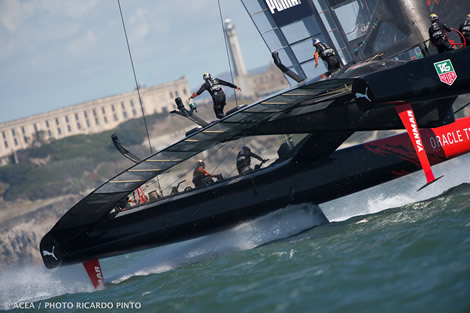
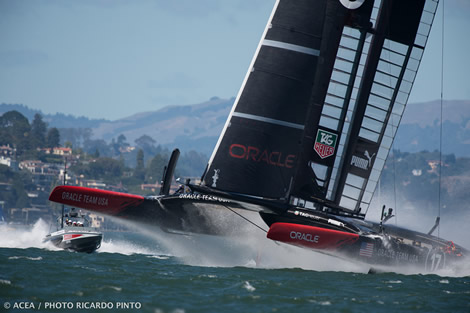
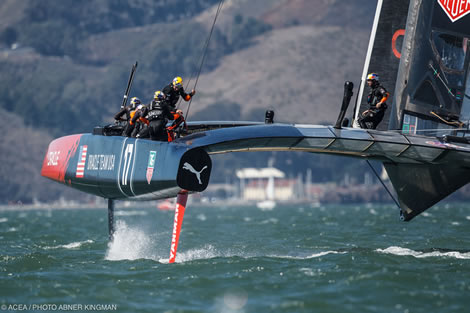
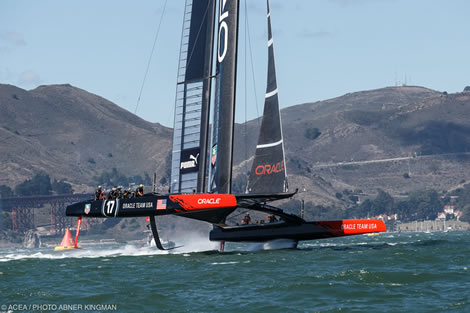
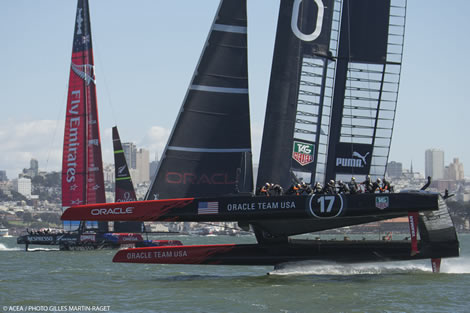







Latest Comments
Mats Ohlsson 04/10/2013 - 18:42
Shure, this was spectacular, but was it sailing? Not to me (and I'm an old Tornado sailor). We lost most of tactics and strategy that is so obvious and exciting in single hull sailing. This was a drag race, very American and very unsophisticated. Sorry, speed alone is not the premier element, sailing is, and I think the Kiwis proved superior in light and hard weather. This was a check book event, I feel very sorry for the Kiwis.Rick Tomlinson ... 04/10/2013 - 08:34
Great article James- good workKingMonkey 04/10/2013 - 01:28
Excellent article, as ever, James. Thanks. One design anything will lower the cost of that element. But the richer teams will just use this to spend more money on R&D for other elements so a significant amount of one design elements are needed to limit the amount of money that can be beneficially spent on "other stuff". The question is how far can you go with this before it ceases to be the design race and challenge trophy that is the America's Cup?HieldM 03/10/2013 - 18:59
Would the option of a one design wing save cost, particularly design and the build costs would be spread over the teams.Add a comment - Members log in